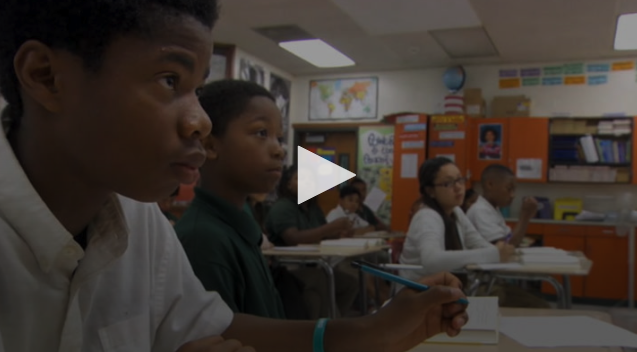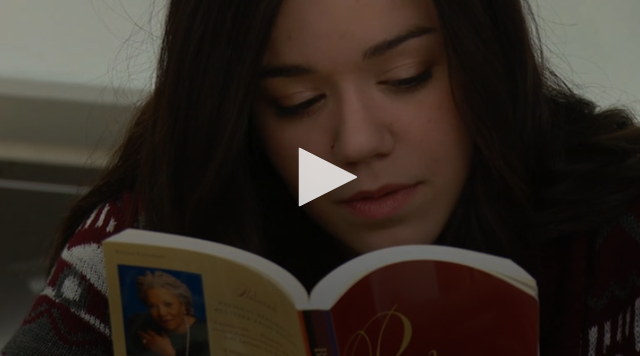Why We Hang In There
Deep sighs, rolled eyes, slumped shoulders, and hanging heads, met with eyes yearning for hope… No, it’s not a summons for jury duty, it’s the reaction I get from teachers when I say, “student collaboration.”
#realtalk for a moment: Getting students to work successfully in a group is REALLY hard!
And yet, despite the complete exhaustion it brings us, we hang in there. Why do we do it? Because we know our students need it. And not just because there are flashy frameworks and graphics that tell us collaboration is important in school. And not just for their future career, college, relationships, or global competition; but because it helps students develop into more empathetic and cooperative human beings. And regardless of what our future looks like, we’re going to need those!
Why It’s Hard
If you’re responsible for any number of human beings, you know that it’s difficult to facilitate effective group work — whether you’re working with children or adults. It’s hard to work through our differences — actively listening, embodying selflessness, and orally communicating one’s thoughts is a challenging process to navigate. Not to mention that issues of status and equity rear their ugly heads during any sort of group discourse (see Horne, Boaler, and Cohen). That’s a lot to manage in a classroom where available minutes continue to shrink with competing initiatives and demands. But all hope is not lost. With some basic systems and structures in place, the conditions for effective classroom collaboration can be established — read on to find out how.
Set Yourself Up For Success
During my ten years in the classroom, I did a lot more wrong than I did right. Student collaboration was easily my biggest source of frustration. By the time I was ready to leave the walls of my classroom and support teachers in the messiness of deeper learning, I had learned the hard way that “you get out of it what you put into it” when it comes to group work. I offer up these three steps, from my own trials, tribulations, and small triumphs, to ready yourself for successful student collaboration:
Define An End Goal
Because collaboration is a bit of a “grey phrase” (what it means to you may be different than what it means to me; what it means in one context may be different than in another), it’s really important to get clear on your operating definition. I have two favorite definitions that I frequently recommend teachers use: Hewlett’s definition and New Tech Network’s definition, as outlined in their OER rubrics. Both of these do a great job of spelling out the nuances of collaboration, or what I call “subskills.”
Use these definitions to help you think about the end of the year: What collaboration skills should students be able to show mastery? Once you can clearly define those as your “North Star,” communicate them with your students and parents. Then, with your end goal in mind, begin to think about breaking down and scaffolding student skills (within the year, semester, unit, or project) to build them up for the finish line.
Scaffold The Subskills
As a teacher, I was guilty of cutting the time spent on scaffolding collaboration (amongst other “soft skills”) when the minutes remaining in the day got crunched. Then I would visit colleagues’ classrooms that had a blissful working “buzz” and wonder why my students weren’t working as productively together. I want to encourage you to put in the time to explicitly teach the ins and outs of collaboration. I learned the hard way that while it may feel like a heavy lift in the beginning, it will save you time and energy later in the year.
VIDEO: Participation Protocols for Academic Discussion
Protocols for student discussion like this one are great structures to put into place that ensure equitable group work. They also spell out for students how to successfully work together by sharing the air, dividing up work for equal thinking (not just equal doing), working through challenges, and ensuring all ideas and perspectives are taken into account.
While there are many great protocols out there, my favorites are those from Expeditionary Learning. When first introducing these protocols, I recommend that teachers facilitate a fishbowl protocol, using whatever protocol they may be introducing to the class. This is a great opportunity to go “meta” with the class, through a debrief that explores what made the group’s collaboration successful or effective. You may even decide to chart student debrief responses into a basic Y chart that highlights what that “looked like, felt like, sounded like” as an anchor chart to remind students of those behaviors during future group work.
And not all protocols have to be orally communicated. Check out this idea for a non-verbal protocol that does a great job of scaffolding collaboration subskills.
VIDEO: Critical Friends: Collaborating as Writers
Assess, Reflect, Rinse, Repeat
I know assessment feels like such a dirty word these days, but it’s critical for students to be held accountable for how they show up in their group if they’re going to develop the subskills of collaboration. To clarify, “accountable” in this case simply means observing and documenting student group interactions, asking students to self-reflect on their collaboration skills, and then providing specific feedback on those same skills.
To help you with this process, go back to your “North Star” and either use an expert rubric or develop your own using those from New Tech Network’s OER rubrics or BIE as a model. Break down the rubric throughout your year so that you’re only focusing on one row at a time.
Really drill down into the language of your rubric and treat those words as “look fors” during group work. Snap photos of body language, voice record statements or jot down quotes from students, or simply tally who is dominating the conversation. Then highlight or circle where on the rubric students are landing. Ask students to take some time to do the same.
You may have them do a weekly reflection like this one, or this one I co-designed with some teachers, or perhaps turn it into a student-facing rubric like the one featured below and in this workbook. Then compare notes, have a conversation, generate goals, rinse, and repeat.

As you plan your next semester, year, or project, I hope you feel inspired to dream from the balcony — what are your big, audacious goals for students to blissfully work together? But I also hope you feel empowered to get on the dance floor. How can you use some of these recommendations and resources to help you achieve those big collaboration goals for your students?










